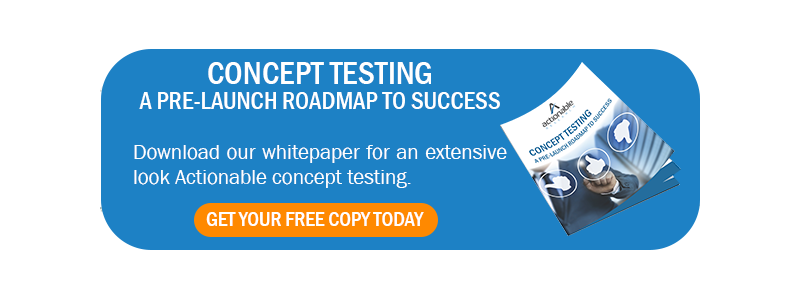
May 30, 2017 10:54:15 AM
To ensure your qualitative studies are a success, it’s important to make sure that you cover all of your goals and objectives within your interviews or groups. Sounds simplistic, right? Why would you ever field a study that would not give you what you need?
Unfortunately (and fortunately), qualitative research does not lend itself to the specific, scaled, closed-end questions that come with quantitative research surveys. Just as developing surveys presents its own challenges (risk of confirmation bias, necessity to make sure every question has properly exhaustive answers, etc.), creating qualitative discussion and interview guides presents its own specific challenges as well. The good news is, if qualitative research is done correctly, the results are a wealth of useful information that will lead you and your company in the direction it should.
Start with Validating your Respondents
This sounds simple, but it’s very important. You already screened your respondents into the research, but you should first verify that information. People make mistakes – doublecheck to make sure they are who they say they are. Are you looking for a particular experience profile or set of skills? Ask them to describe who they are or what they are doing briefly at the outset of the interview, and then use that information to make sure the questions are relevant and consistent throughout the interview. It also helps you in analyzing the results when the relevant respondent information is included in the interview.
Follow a Defined Path
One of the surest ways to decrease interview quality is by using an interview or discussion guide that is not logical in its flow, jumping around unnecessarily. Questions that flow based on logical stream of thoughts or through a process of questions the respondent can perceive and understand is usually very important to an efficient interview.
Need to change topics? Just say so. Helping the respondent reset to another topic works very well. Not sure what pathway to take? Consider the subject matter of your questions. Is it more about specifics or is it more about the big picture? Is it easier for your interviewee to understand your questions if you begin with a detail, or with a big picture idea? Understanding the nature of what you are seeking to understand will give you the clues you need to best understand how to transition. This is especially important if the topic of the research is new or potentially disruptive; in this case, offering a big picture “level set” will be important before respondents can answer your questions properly.
Probing is the Key
Qualitative research, by its nature, is supposed to be a directed dialogue between the respondent and the interviewer. It’s important to give proper context and set the expectations of the topic, but it’s just as important to acknowledge the interviewer is supposed to direct the discussion, not lead the discussion.
- Interviewers who lead the discussion become participants. They are heard almost as much as the interviewee on the recordings. They overstep their role because they have to fill in details or give questions that share too much.
- Interviewers who direct the conversation make sure the interview stays on topic, but asks relevant follow up questions and then stops. They let the respondent speak.
How do we ensure this delicate balance? A combination of both open-ended and probing questions. Probing questions (follow up, specific options, etc.) enhance the open-ended question because you have the ability to hone in on specific details after allowing the respondent to speak. While the best reason for the use of probes may be that the respondent doesn’t bring up the topics you were most interested in unaided, probing on specifics can help keep the interview on track while giving the respondent an opportunity to think in a different direction. There is also the added benefit that an open-ended question may receive a response that addresses something you hadn’t thought of before, which is a significant benefit of qualitative research.
Examples of probing:
- What specifically about this system makes it the best?
- Examples for probing, ask unaided first: Number of lasers, number of detectors for side and forward scatter, software, flow rate, others.
- What resources and education have you seen from this company concerning your preferred programming language?
- Probe for specifics. If they have seen, ask the name of one they particularly like, and why.
- Toolkits and libraries?
- White papers?
- Training opportunities
- Communities?
- Of the types of resources and education materials you mentioned, which one is the most important and why?
- Probe for specifics. If they have seen, ask the name of one they particularly like, and why.
Make the Respondent Primary and Yourself Secondary
The point of qualitative research is to understand the thinking of the respondent, not to make the respondent understand your thinking. Write clear questions that allow the respondent to answer from their perspective, and direct them if needed to make sure other relevant and important topics are addressed. Your respondents should be validated and discuss their area of expertise, and the questions you write should follow a clear, logical and understandable path, and include plenty of probes to help direct the conversation. If you follow this simple plan, you will significantly increase your chance for qualitative research success.
Consult Professionals
Qualitative research takes a significant time commitment. It's worth it to reach out to research professionals, like Actionable Research, who have years and years of practice. Our experience has left us with first-hand knowledge of best practices for approaching qualitative research. Contact us today to hear about how our experience can help you meet your research goals and objectives.

